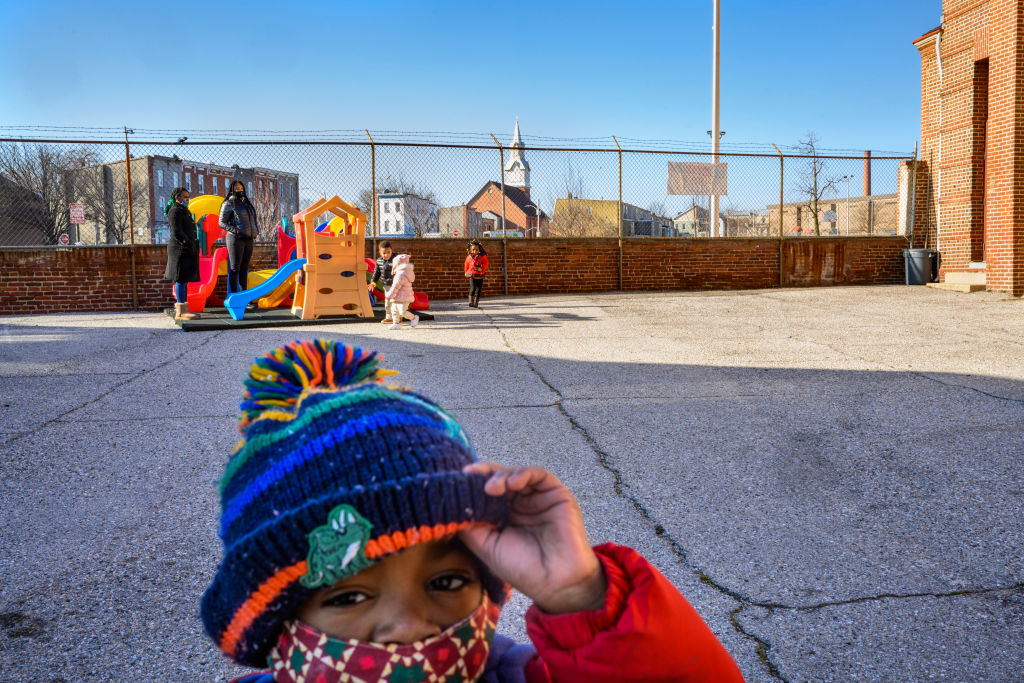We've Gone Over the Childcare Cliff. Now What?
(so where are the republicans with their "family values"?????)
We’ve Gone Over the Childcare Cliff. Now What?
10/12/2023 by Julie Kashen

Little Flowers Early Childhood and Development Center in Baltimore, Md., on Jan. 12, 2021. (Matt Roth / The Washington Post via Getty Images)
On Sept. 30, Congress let federal childcare stabilization grant funding expire. For providers like Heather in South Carolina and Suzanne in Connecticut, grant funds meant the difference between shutting down and keeping their doors open. Now that we’ve gone over the childcare cliff, 3.2 million children could lose their childcare.The end of the federal funds was abrupt, but the impact will be felt more like a steady drip, slow roll, or, as one leader called it, quicksand.
First, providers will be forced to raise tuition prices to offset the loss of stabilization grants. Christina Eubanks in Anchorage, Alaska, and Angela Schmitz in Fond Du Lac, Wis., have already raised fees 23 percent and 10 percent respectively, in response to the expiration of stabilization funds, and Schmitz is preparing to raise them another 10 percent in January. Consequently, parents—particularly mothers—are making tough decisions to pay higher prices given the already astronomical cost of childcare or, in some cases, reducing their work hours or quitting their jobs.Then, staffing shortages—like in Missoula, Mo., where Wild Wonders home-based childcare program has already lost its three employees when the stabilization funds stopped supporting higher pay. They have gone from serving 12 to four children, and are one of the many programs that will be forced to contract—serving fewer children or closing classrooms. Finally, childcare programs—as many as 70,000 by our projections—will have to shut down altogether.
. . . . . .
Some forward-looking states—red and blue alike—have invested their own budgets into mitigating the impact. Alaska, Kentucky, Maine and Minnesota, to name a few, have put money into stabilizing the childcare sector in their states, many by investing in better compensation for the early education workforce. These states saw clearly that federal funding in childcare worked. It stabilized providers (more than 220,000 of them nationwide according to the Administration of Children and Families at HHS), supported the well-being of children, allowed parents to work and enhance their education and training, and helped keep the economy afloat during the pandemic.
But it’s not enough. Members of Congress have called for $16 billion a year through the Child Care Stabilization Act. This is what’s needed in the short-term. In the long-term, the United States needs to build the comprehensive childcare and early learning system children, families, and our economic prosperity require. President Biden’s Build Back Better Act that passed the House last Congress included an investment in the care economy that acknowledged how critical care workers and care work is. While it was not included in the Inflation Reduction Act, we’ve had a seachange among elected officials in acknowledging that care workers and care work are essential to our lives and our economy. Now it’s up to Congress to do right by those workers and invest in childcare.
https://msmagazine.com/2023/10/12/childcare-cliff-congress-funding/
